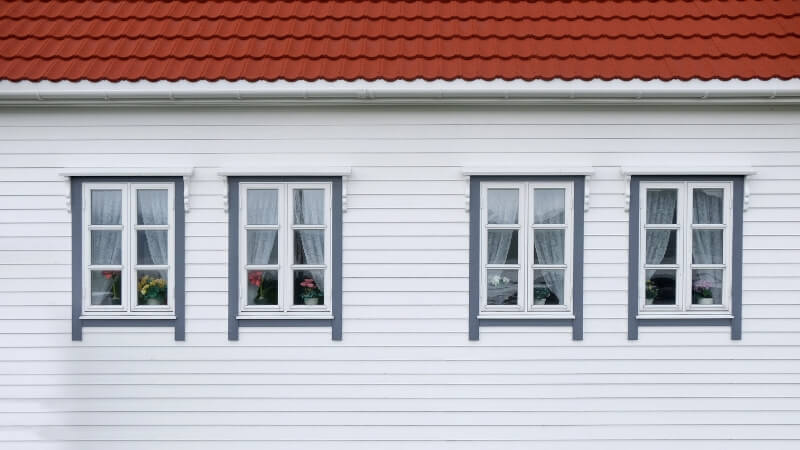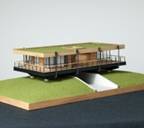FLAT ROOF REPAIR
it can be difficult to find a contractor that you know is reliable. Before you start typing into that search engine, there are somethings that you need to know about finding a contractor.
You will also need to understand what makes your flat roof different from other roofs. So, let’s start there. Let’s explore your roof. Then talk about the repairs you may need. Finally we will discuss what you need to look for in a contractor. Once we tie it all together, you will easily be able to find the perfect supplier for your needs.
How are they different?
Flat roofs are the type of roofing that you usually see on commercial buildings. Rather than coming up to a point, they are low and have no point. They are called flat, but in reality they simply have a low grade slope.
What are the common problems with flat roofs?
As with any roof option, you will need to make sure that you have your roof regularly inspected. It is common for them to have drainage problems. Without proper drainage, water will pool and cause weak spots in the decking.
Ways to find a contractor to fix your flat roof problems
The best way to find a contractor is to start by asking people for recommendations. You can find out a lot by talking to your neighbours, friends, and relatives.

Creative ways to make the most of your flat roof
As homeowners are finding more and more ways to utilize all areas of the home, the roof is evolving into a trove of wonders. Want extra space for a terrace or patio? Try a flat roof design. Want an extra outdoor space or conservatory? Try a flat roof. No room for gardening and lack of exterior area? Try a flat roof and consolidate space.
Although flat roofs have been around for centuries in home and villa design, it wan’t until Le Corbusier and Mies van der Rohe that they gained popularity and became almost a necessary design element for a certain sense of modernity in homes. Roofs are a wonderful way to create semi-indoor environments for almost any purpose, even if it’s just extra space!
One of the best uses of a flat roof is for personal gardening. As the span of the roof is typically the size of a standard garden, this will give you the opportunity to provide sustenance for your family on a scale that is profitable and plentiful.
One thing to consider before constructing your roof top garden, is that the roof will allow for proper drainage. This might be best to hire a professional for and an inspector, to make sure the job is done right. The last thing you want is sitting water and dirt to affect the foundation of your home. You can also do what this homeowner did and use the roof top area for general green space and medium- to larger-sized trees.
This option will depend on your family and the climate you live in—it will also depend on where you feel it is important to invest your money. Some experts say that adding a pool (particularly in-ground) will add value to your home in the long run and make it more appealing to future buyers. Others argue the opposite. This all depends on where you live—if you’re in a warmer or tropical climate where most homes include pools, then go for it!

FLAT ROOFING FOR YOUR HOME
Flat roofs in Reading may not be the most glamorous choice, nor the most exciting thing to think about in terms of property improvement. However, once you know more about the pros of this roofing type, it quickly becomes apparent that this is a great choice to make.
However, having great success with your roofing system all stems from which roofing company in Reading you choose to work with.
Common Uses for Flat Roofing
One of the traits that makes flat roofing so unique, as well as popular, is the ability for it to be more functional. Your flat roof can do more than just protect the building underneath.
Flat Roofs Make Roof Repairs and Cleaning Your Gutters Easier
Flat roofs are known for many things, but few people think of how convenient they are. For one thing, when it comes to repairs or even roof replacement, this is an easier system to use for accessing it and taking good care of the rooftop.
It’s also easier to access your gutters which play such an integral role in protecting your roof, siding, and even the foundation of your building, from rain water. Your gutters and roof work together as a system and if one has a problem, the other will as well.

Things you Need to Know About Sun Tunnels
Sun tunnels, light pipes, sun tubes – whatever you know them as – will transform a dark or windowless room into an area full of natural light and energy.
What is a sun tunnel and how do they work?
A sun tunnel is a fantastic addition to an area of your home where it hasn’t been possible for natural light to get to before. They channel sunlight from your roof, down a highly reflective tube into the necessary room below
What options are available for a sun tunnel?
The sun tunnel itself is available in either flexible or rigid option. Both have their own benefits which outweigh the other, and should help you choose which would be perfect for your home.
Rigid sun tunnels – the better of the two available, rigid sun tubes give you a better light transmittance than the flexible sun tunnel. Rigid sun tunnels allow for the light to channel down the tube from roof to ceiling in a direct motion. The less the light bounces off the internal surface of the tube, the more natural light you will get in the required room. Rigid sun tunnels can offer up to 20m of effective light distribution.
Flexible sun tunnels – the low cost solution for adding natural light. Perfect for shorter distances, the flexible tube allows you to negotiate around obstructions in the roof space.
Basics on Flat Roof Insulation
The importance of flat roof insulation
Flat roof insulation is yet another way to properly protect your home from unwanted external and internal effects and provide your home preferable thermal and acoustic comfort. First of all, bear in mind the difference between flat and pitched roofs, just as the difference between some subcategories and classifications within these roof types, which will also determine the type of insulation you need. We herewith offer some flat roof insulation basics that will show you the importance of proper insulation and help you make the right decision.
Flat roofs: Definition and Classification
Let’s start from the top, by defining and determining the very definition of a flat roof. Namely, a flat roof is a building covering which is set horizontally with very low pitch, which is the basic difference when compared to pitched roofs. Flat roofs are usually covered with some type of waterproof material, being the membrane of the roof, allowing the water to run off into a gutter system which directs it to the ground or to a built drainage system. Flat roofs are usually made out of concrete, as a cheaper way to provide adequate protection form the heat, especially in warmer climes, where freezing is not expected during colder time of the year or flat roofs can have a timber structure which is much more appropriate and useful in colder climes where there is a potential danger of water freeze which can lead to breaking up of concrete structure due to ice expansion. Concrete flat roofs are usually reinforced with some insulation material, such as extruded or expanded polystyrene board, mineral or glass fiber batts, phenolic or urethane foam board, which are placed under the roof covering. Timber structure flat roofs on the other hand usually have mineral or glass fiber quilt placed between the joists.
Another thing to know about flat roof insulation is the basic flat roof types. Flat roofs are generally classified as “cold” or “warm” roofs, depending on the thermal insulation position. Cold flat roofs structural components are not protected from the heat by a insulation layer which makes them susceptible to damaging caused by thermal movement, why they are not recommended now days, though commonly used. Thermal insulation in cold roofs is placed under the structural deck, between the joists. On the other hand, in warm flat roofs insulation is laid above the structural deck, which maintains the temperature of the deck at the inner temperature level, thus protecting it from any extreme cold or hot influences and making it less subject to thermal movement.
Flat roof insulation: Methods and Materials
There are also some things to consider and take care of before installing flat roof insulation. The first thing is flat roof ventilation. Simply put, proper ventilation enables hot air and accumulated moisture to escape, which is very important since moisture, gathered around joists will in time effect insulation performance. Since flat roofs don’t have any eaves, proper ventilation could be provided through exterior wall side vents or roof vents. Another important thing are vapor barriers as protective layers which prevent any remained moisture to cause the drop ceiling or drywall to rot, placed between the ceiling panels and joist and insulation. Finally, another thing to take into account in flat roof insulation is sealing any bypass, which appear as any crack or hole in the insulation, such as the space around lighting fixtures. These bypasses can cause warm air leakage, let cold air in or create moisture air pockets, so it is important to properly seal them.
There are some basic methods applied in flat roof insulation. Namely, the insulation can be installed within the structure zone, with or without ventilation, usually between the existing roof joists, which could be a good solution, since this way you maintain the existing structure and its thickness. However, this method of insulation usually involves the removal of roof decking and covering, so it is best done whenever you decide to renewal your roof covering. Another method of insulating a flat roof is insulation above the roof structure, done by applying warm or inverted deck system. Warm deck system is based on the use of resistant insulation boards, since another deck is raised between the already existing one. This can be done by using rigid insulation and directly installing a new roof covering or by raising another timber structure above the existing one. Inverted deck system, as a variation of the previously explained warm deck system, involves placing the insulation above waterproofing layer. Finally, another way to insulate your flat roof is by applying insulation beneath the structure, which will depend on room heights, by simply adding another ceiling below the existing one, using shallow joists.